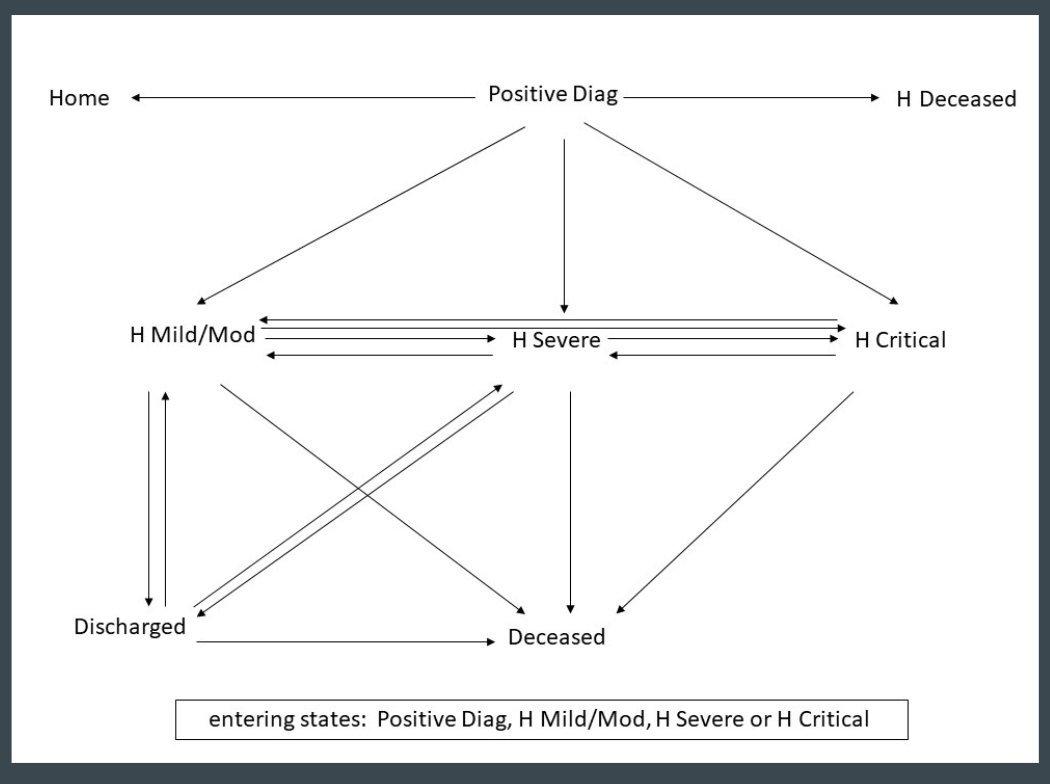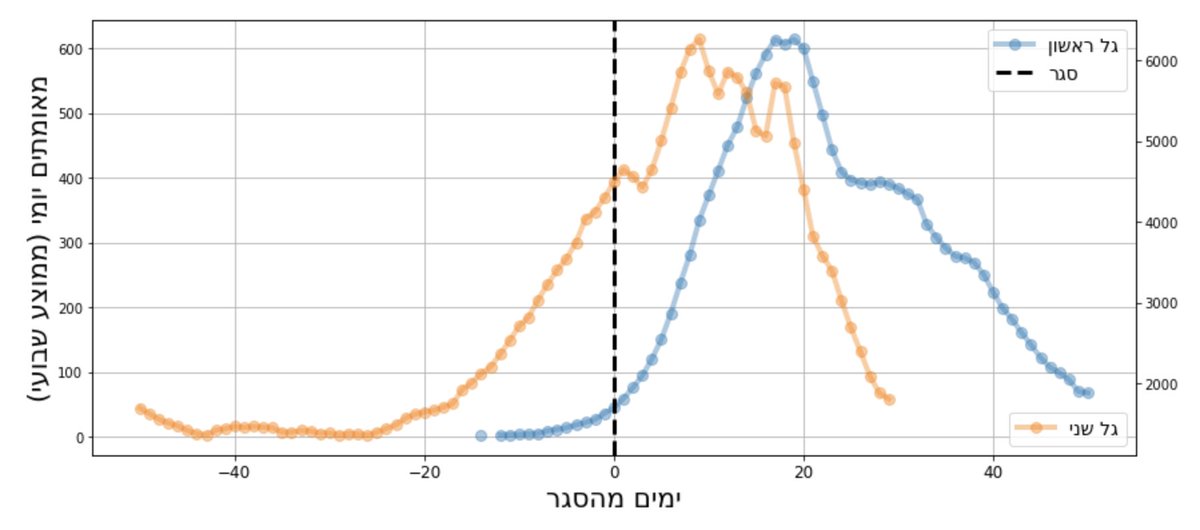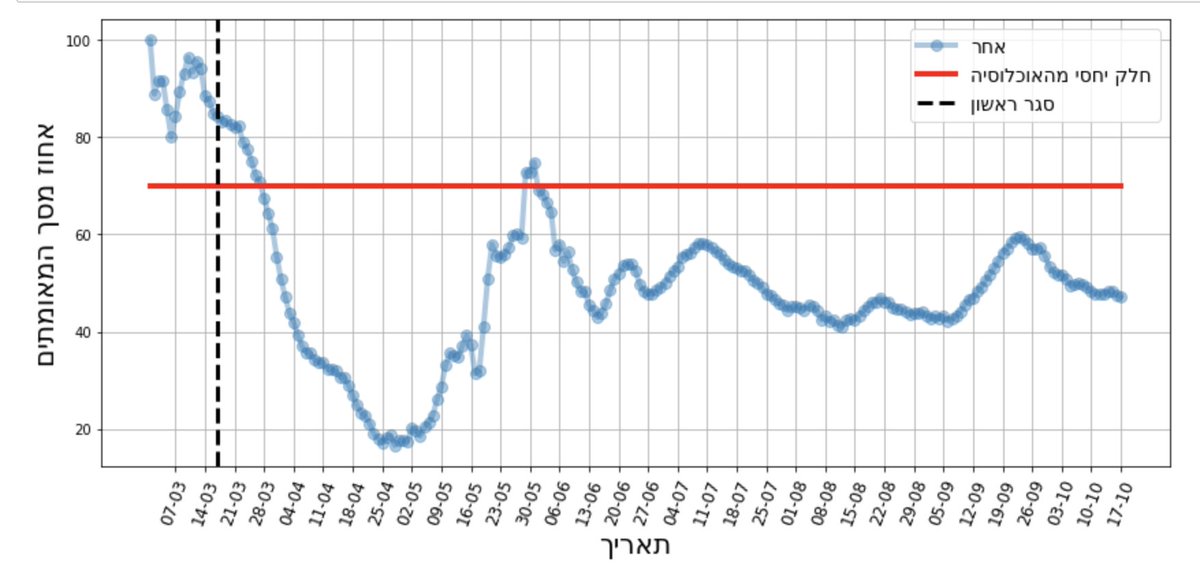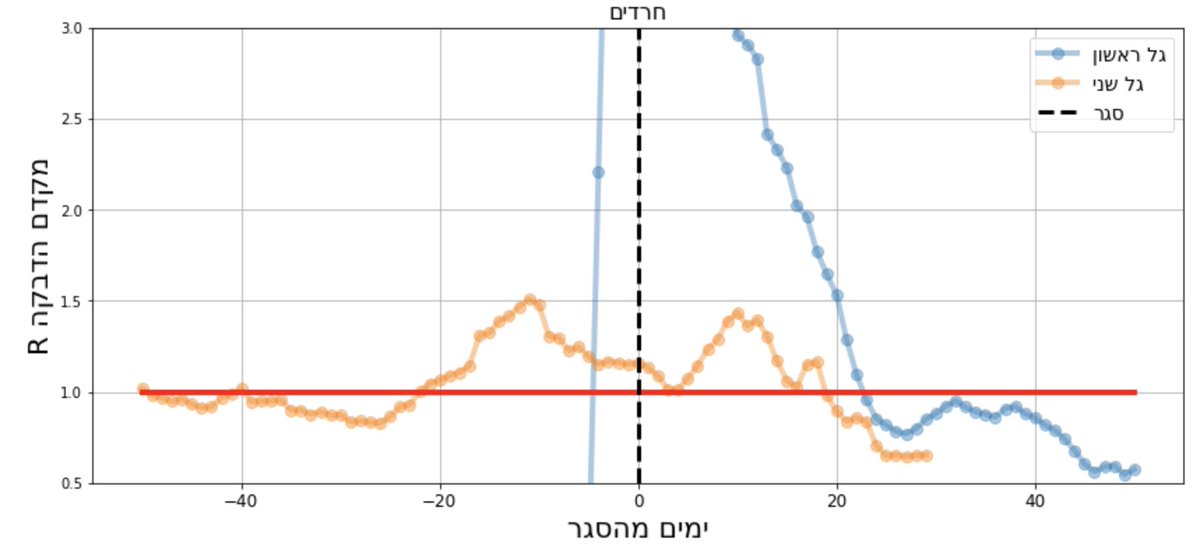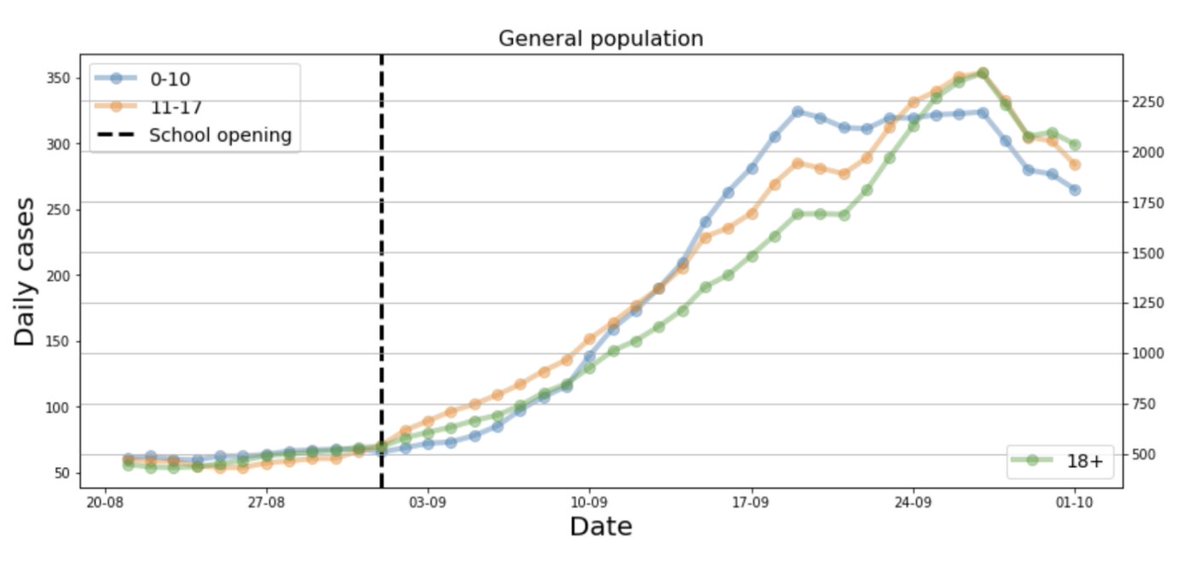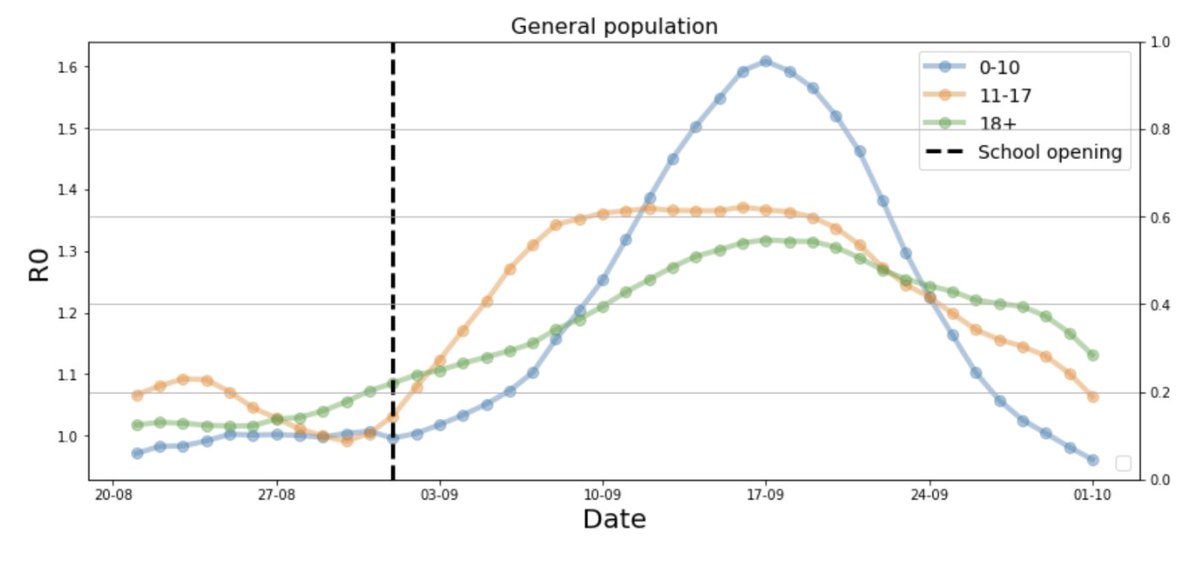
Israel's Covid-19 end game: Lockdown + Rapid vaccination
Israel is the first to enter a 3rd lockdown but is also #2 in vaccines per capita with 2.4% vaccinated and a daily date of 1.1%
This strategy may end our Covid-19 fatalities by March. We modeled how this may play out
>>>
Israel is the first to enter a 3rd lockdown but is also #2 in vaccines per capita with 2.4% vaccinated and a daily date of 1.1%
This strategy may end our Covid-19 fatalities by March. We modeled how this may play out
>>>

First, how did we reach a 3rd wave and 3rd lockdown?
Simple: we never ended the 2nd wave and still carry the burden of those mistakes:
Numbers were still high when we exited 2nd lockdown
Simple: we never ended the 2nd wave and still carry the burden of those mistakes:
https://twitter.com/segal_eran/status/1313831721981415428?s=20
Numbers were still high when we exited 2nd lockdown

And we repeated the same mistakes of the second wave. When cases started rising in specific sectors, first the Arab sector, then the orthodox, we didn't put enough measures in these peak areas, so eventually it spread to all sectors and all cities 

A current concern is the recent rapid rise in the orthodox population, reaching an unprecedented R of 1.89, meaning doubling cases every 4 days
We never saw such rapid rise at high baseline numbers. The reason is unclear and one options that must be examined is the UK variant
We never saw such rapid rise at high baseline numbers. The reason is unclear and one options that must be examined is the UK variant

All of this led to our third lockdown
We analyzed how this will play out on cases, critically ill, and deaths, given the vaccines
Our centralized healthcare system allows rapid vaccination: 2.4% of the population has been vaccinated and starting 12/27, it will be 1.1% per day
We analyzed how this will play out on cases, critically ill, and deaths, given the vaccines
Our centralized healthcare system allows rapid vaccination: 2.4% of the population has been vaccinated and starting 12/27, it will be 1.1% per day
This can be dramatic. Israel has ~1.4 million people above age 60 so at >100K vaccines per day they can all be vaccinated in ~14 days
Since they account for 92% of deaths and 74% of critically ill, this can lower deaths 10-fold and critically ill 4-fold
Since they account for 92% of deaths and 74% of critically ill, this can lower deaths 10-fold and critically ill 4-fold
Our modeling assumptions were:
-- 100K daily vaccinated from 12/27
-- 60+ vaccinated first (current strategy)
-- Vaccines effective 14 days after first dose, at 95% for symptoms and 65% for infectivity
-- Only 80% of people will agree to get the vaccine
-- 100K daily vaccinated from 12/27
-- 60+ vaccinated first (current strategy)
-- Vaccines effective 14 days after first dose, at 95% for symptoms and 65% for infectivity
-- Only 80% of people will agree to get the vaccine
The results:
Assuming a 3rd lockdown effective as the 2nd in terms of R, we reach a peak in mid-Jan. of ~6000 daily cases, ~900 critically ill, and 1100 additional deaths until March
But by March, there should be very few critically ill patients and no more rise after that
Assuming a 3rd lockdown effective as the 2nd in terms of R, we reach a peak in mid-Jan. of ~6000 daily cases, ~900 critically ill, and 1100 additional deaths until March
But by March, there should be very few critically ill patients and no more rise after that

We also modeled continuing without a 3rd lockdown
Vaccinations at our rate are so effective, that at current realistic estimates of R being 1.2 or 1.25 we could get by without a lockdown, albeit with more deaths
Comparison of scenarios with different R values from 1.2 to 1.3
Vaccinations at our rate are so effective, that at current realistic estimates of R being 1.2 or 1.25 we could get by without a lockdown, albeit with more deaths
Comparison of scenarios with different R values from 1.2 to 1.3

Bottom line: The combination of a lockdown and a daily vaccination rate of 1.1% of the population may end most Covid-19 fatalities in Israel by March
Great work by my students @H_Rossman, @tomer1812, @smadarshilo
And special thanks to @GorfineMalka and @ShalitUri with whom we collaborated on our model from cases to hospitalizations
And special thanks to @GorfineMalka and @ShalitUri with whom we collaborated on our model from cases to hospitalizations
• • •
Missing some Tweet in this thread? You can try to
force a refresh



